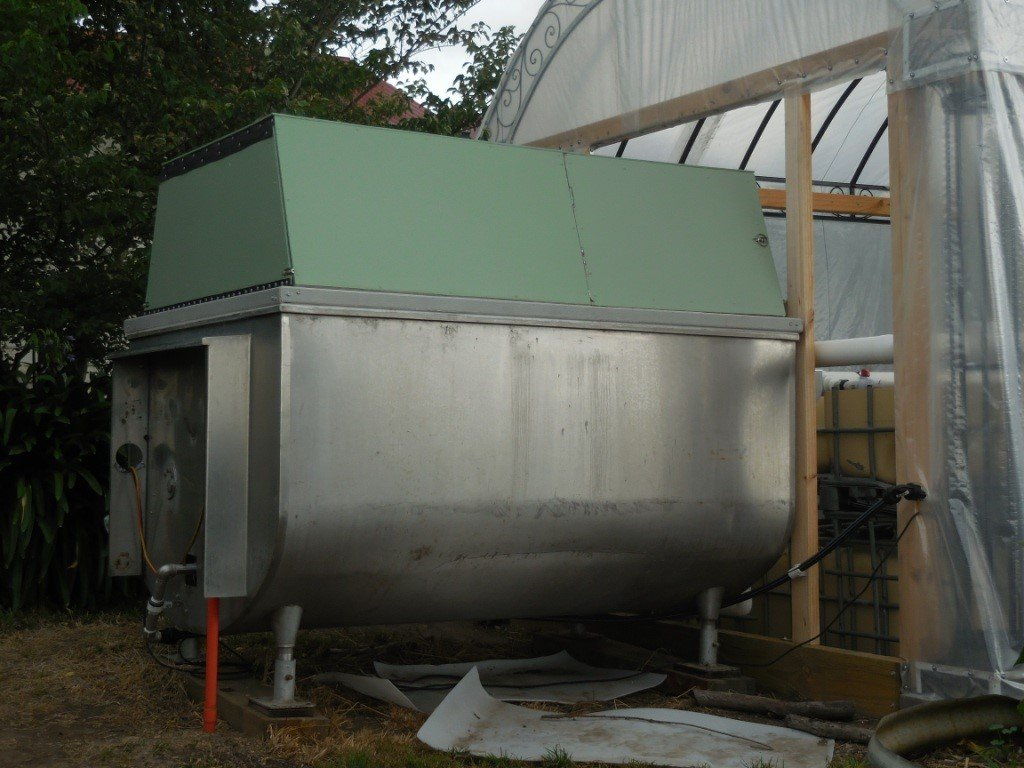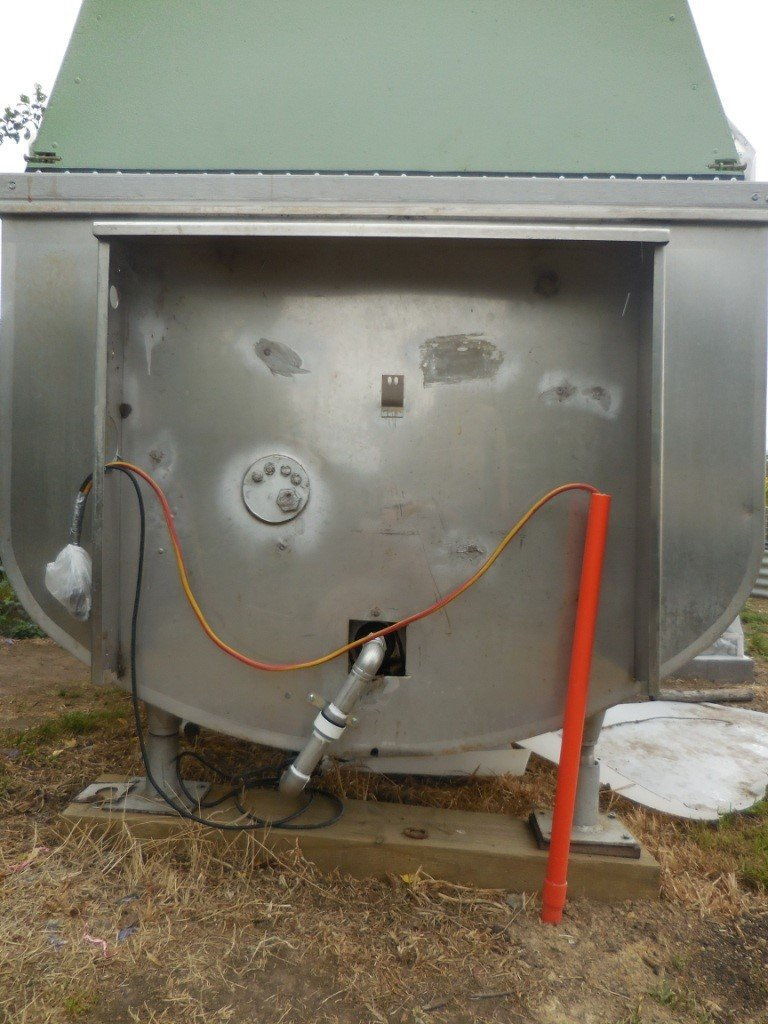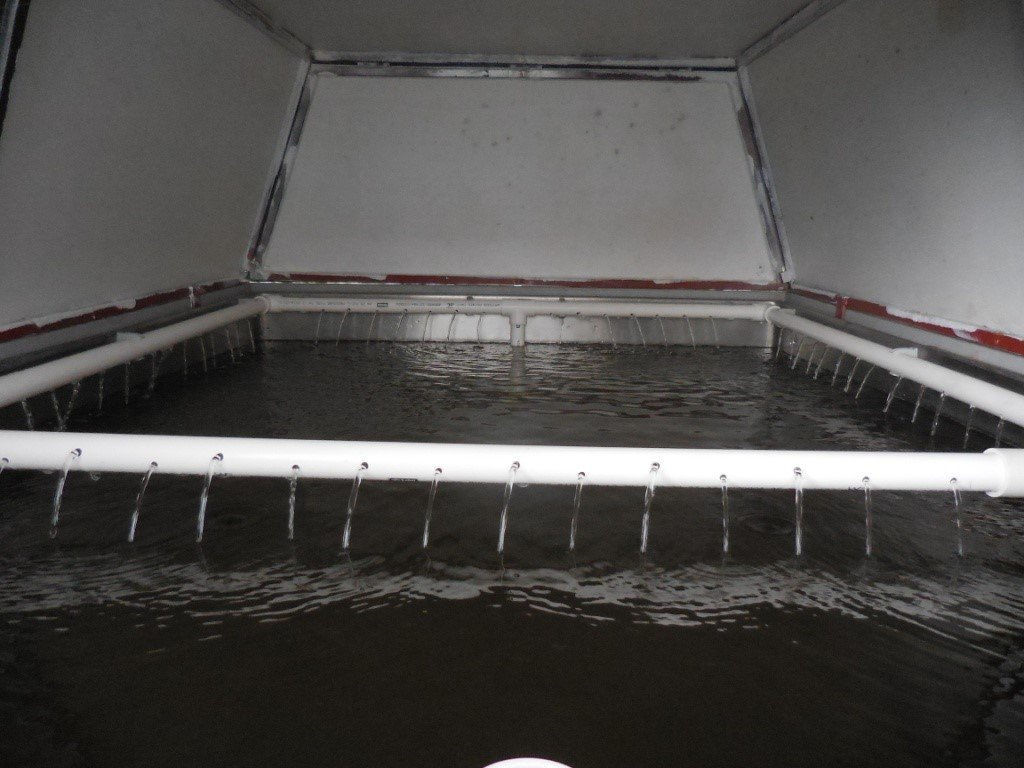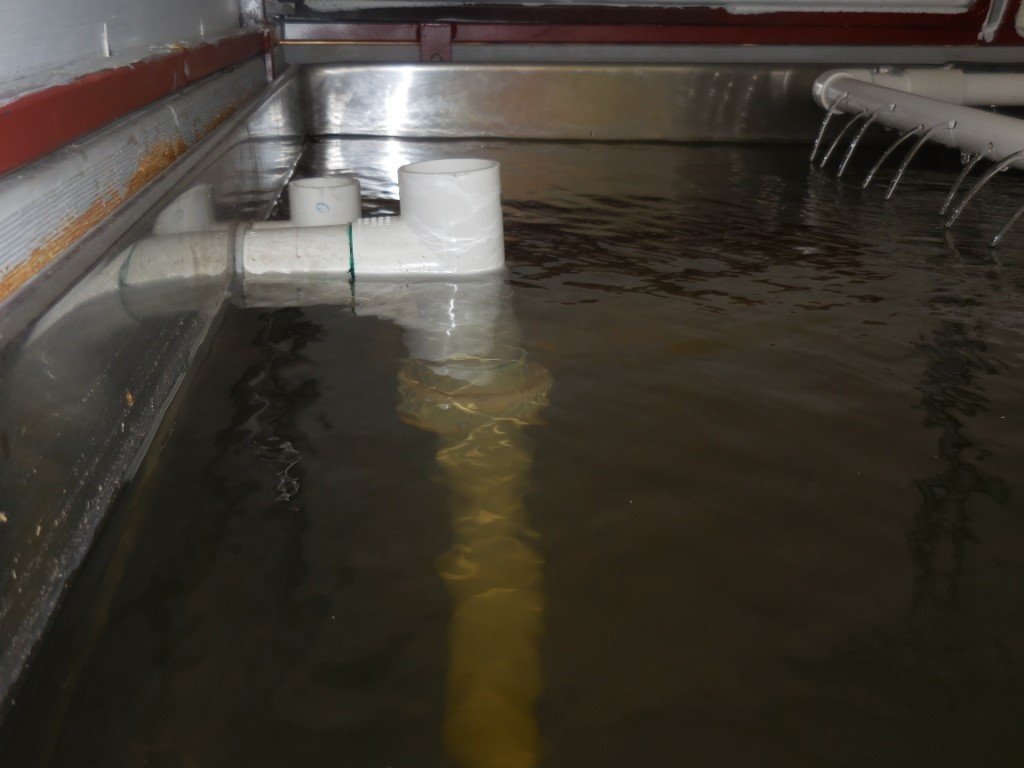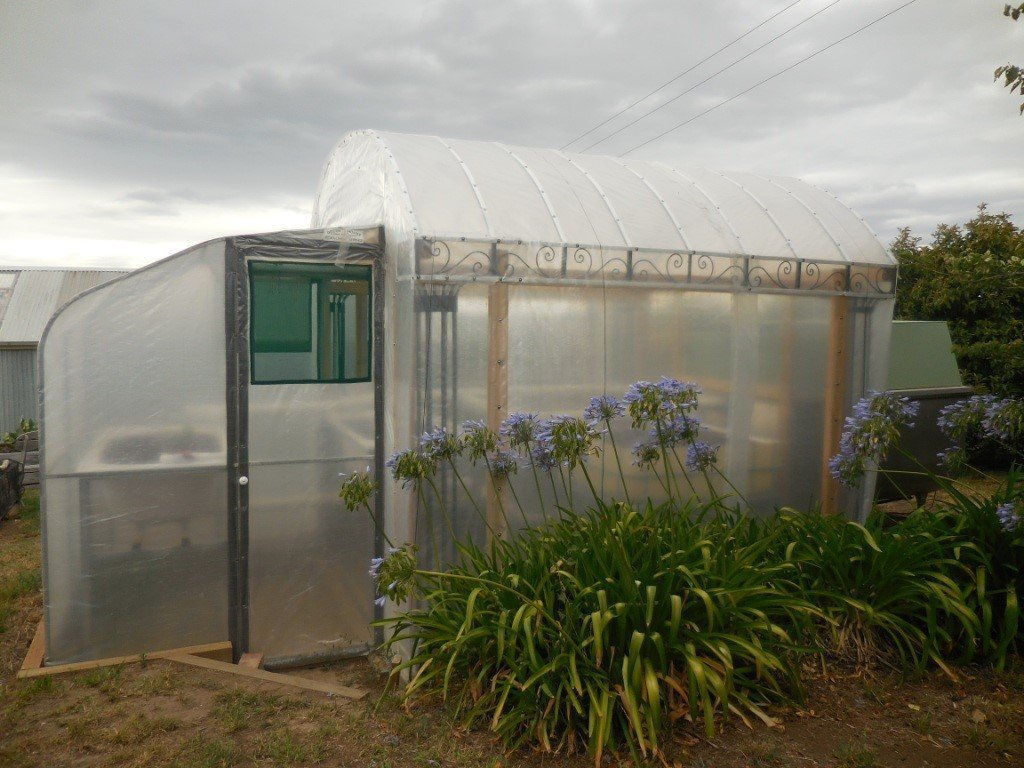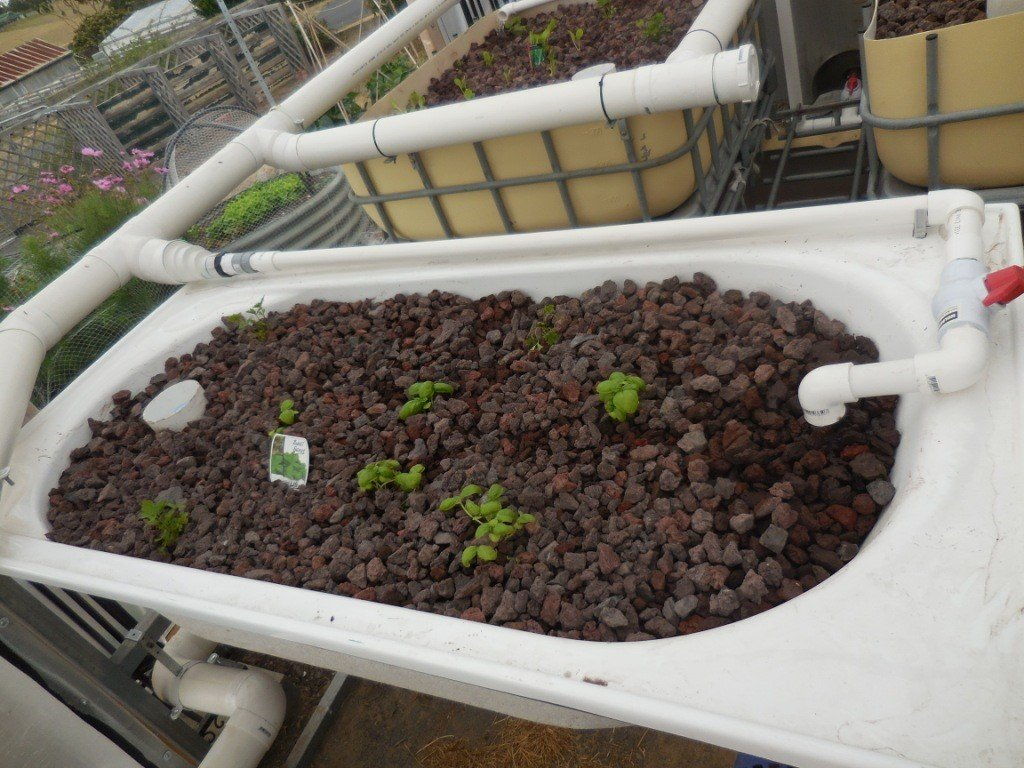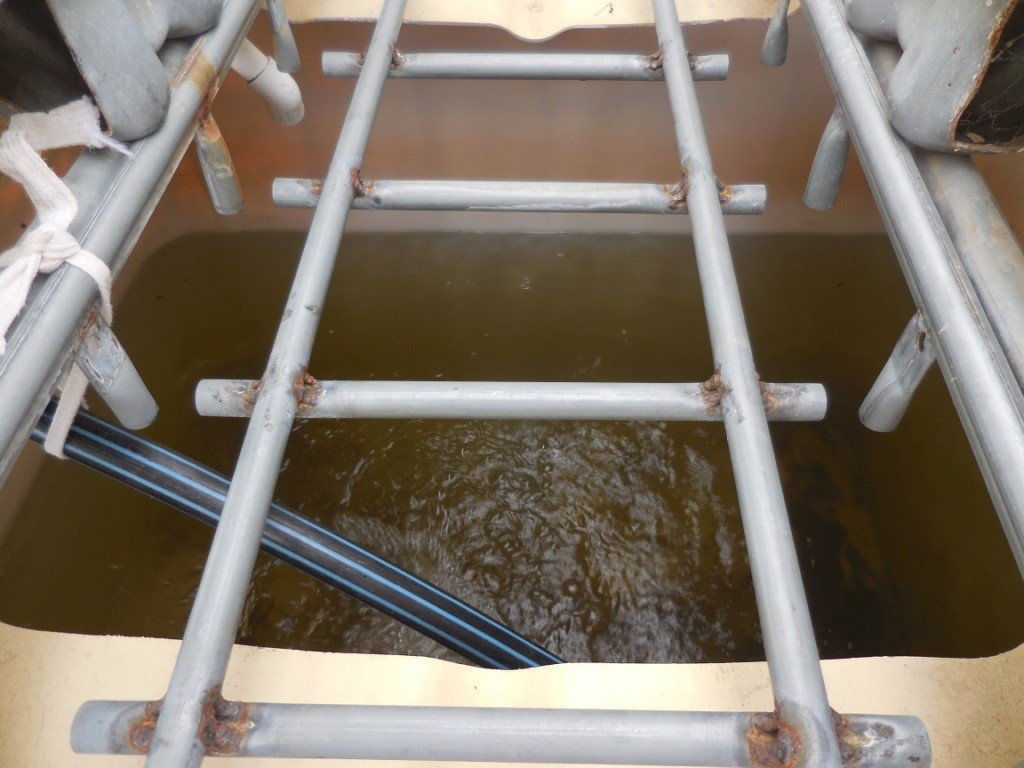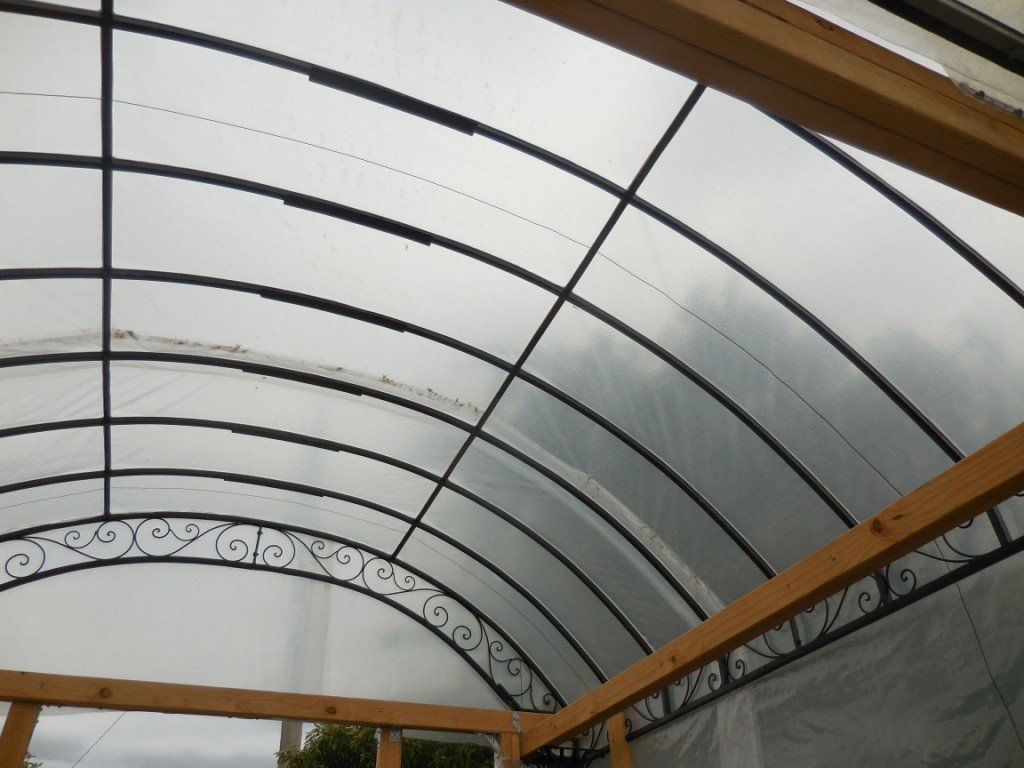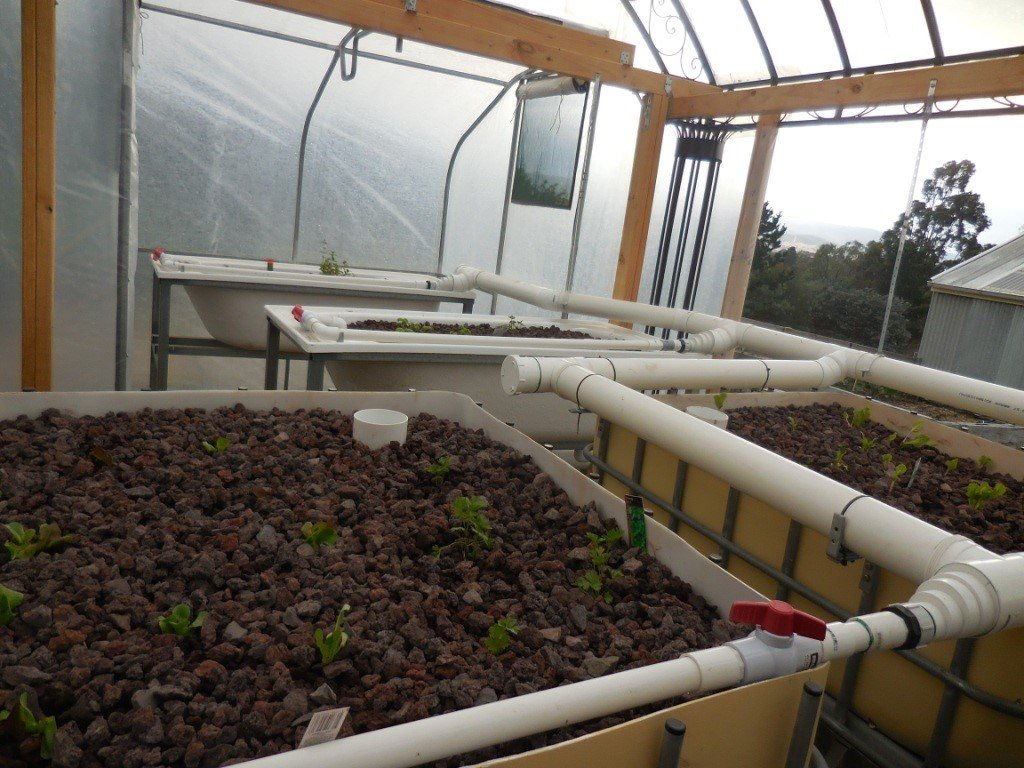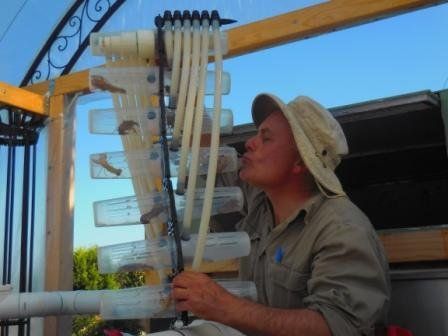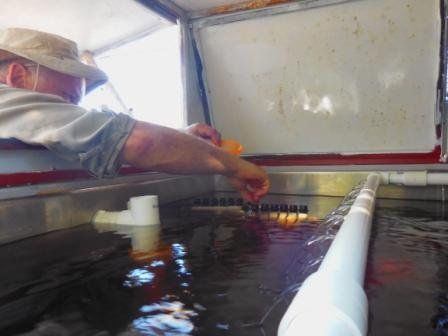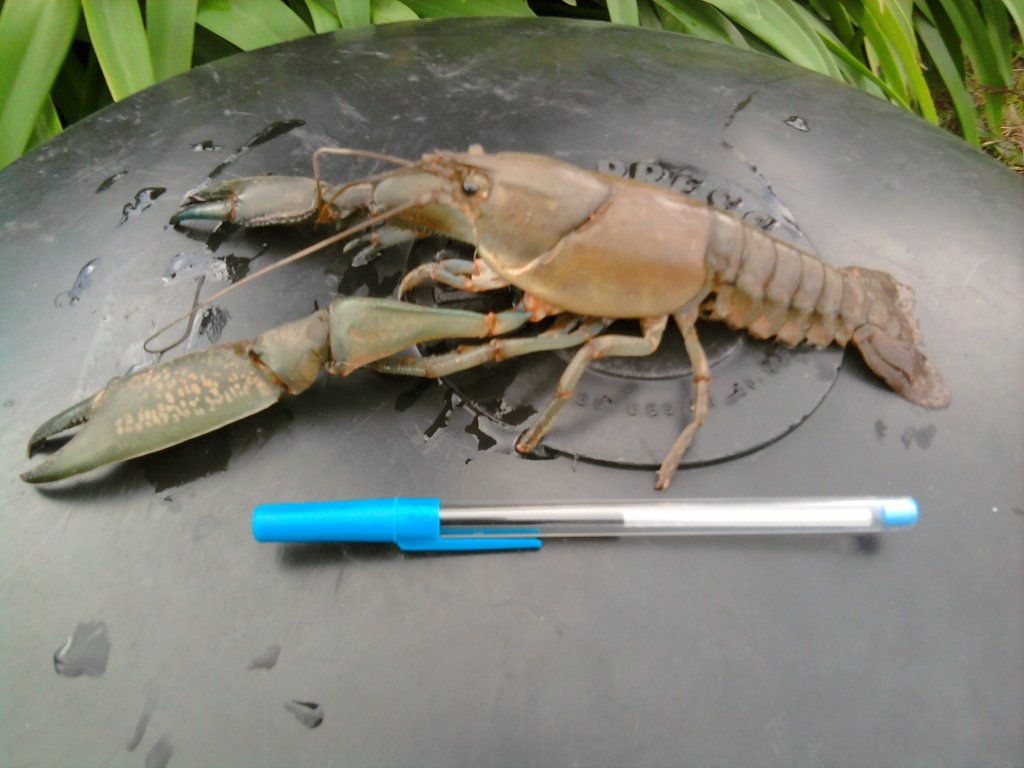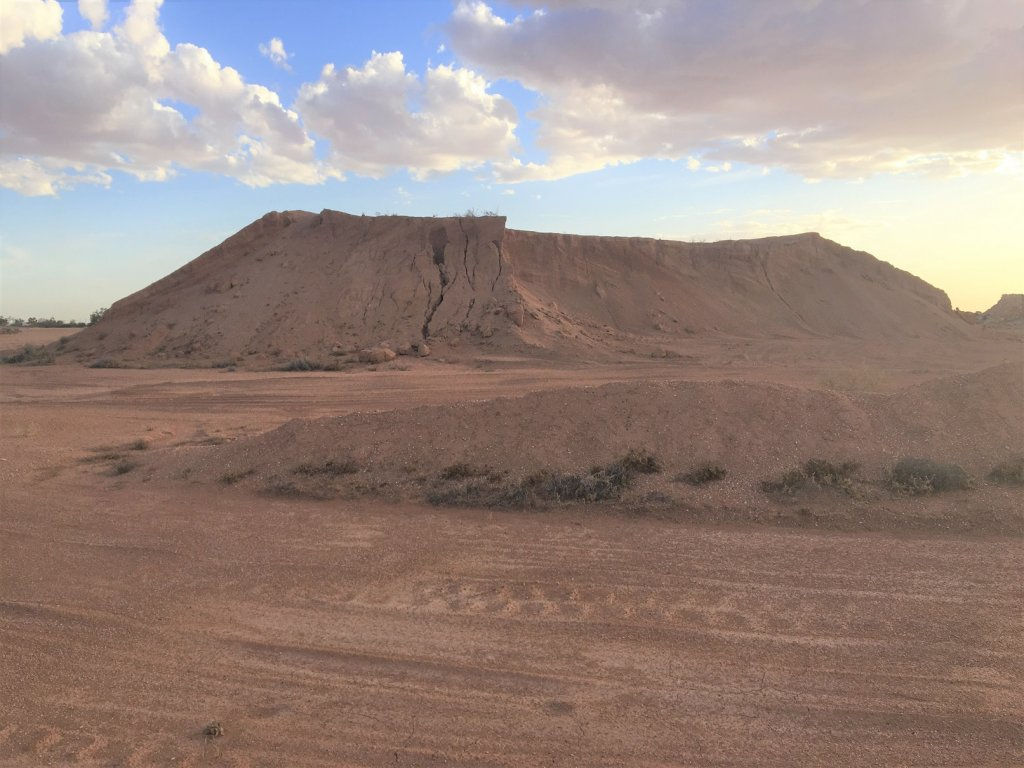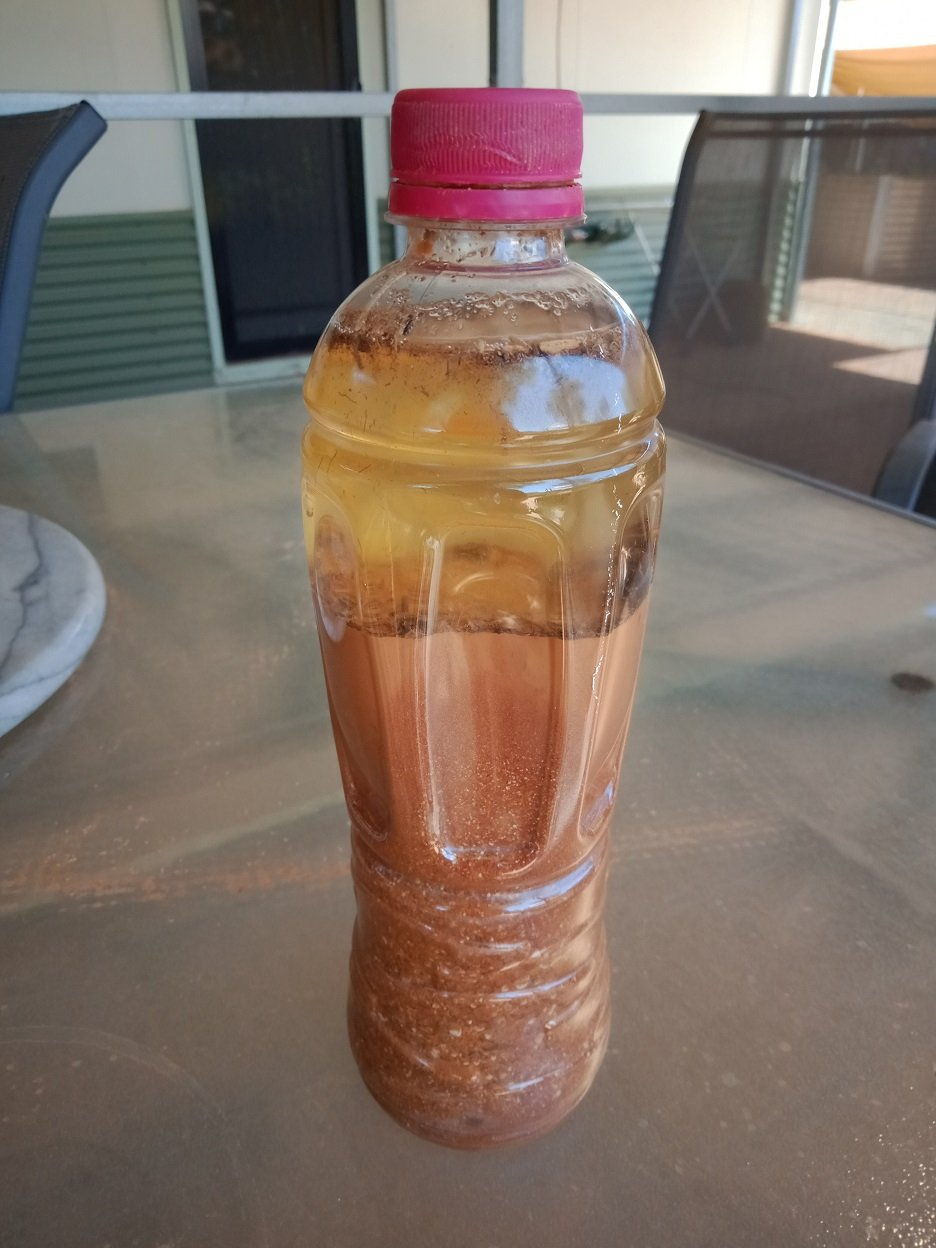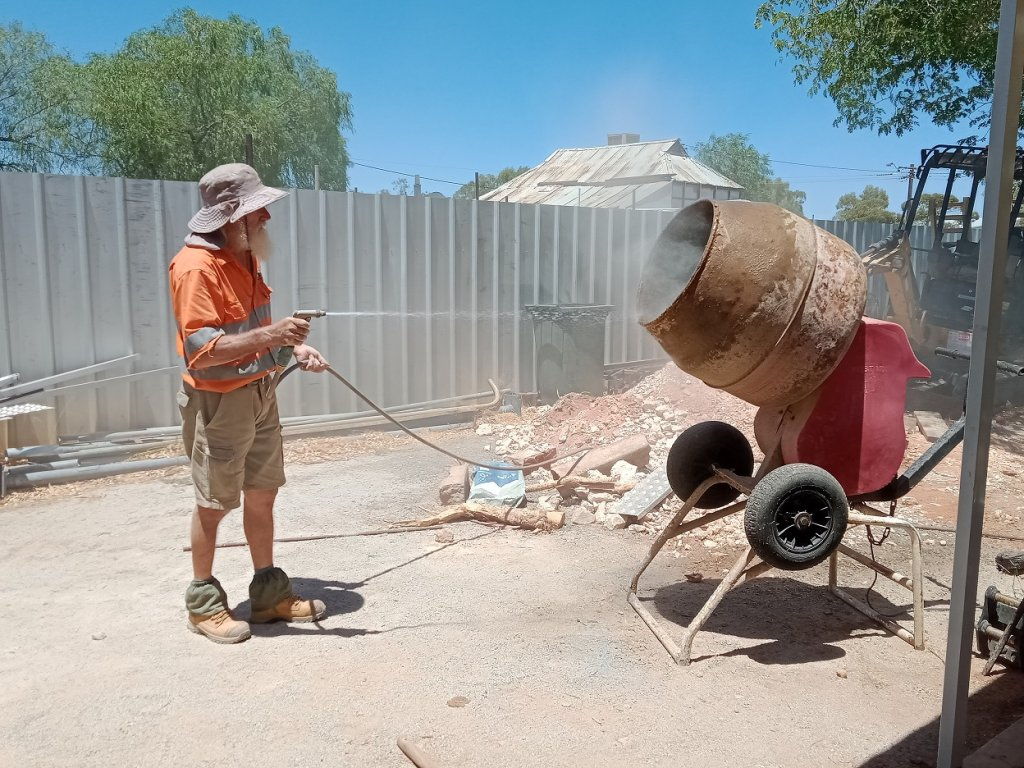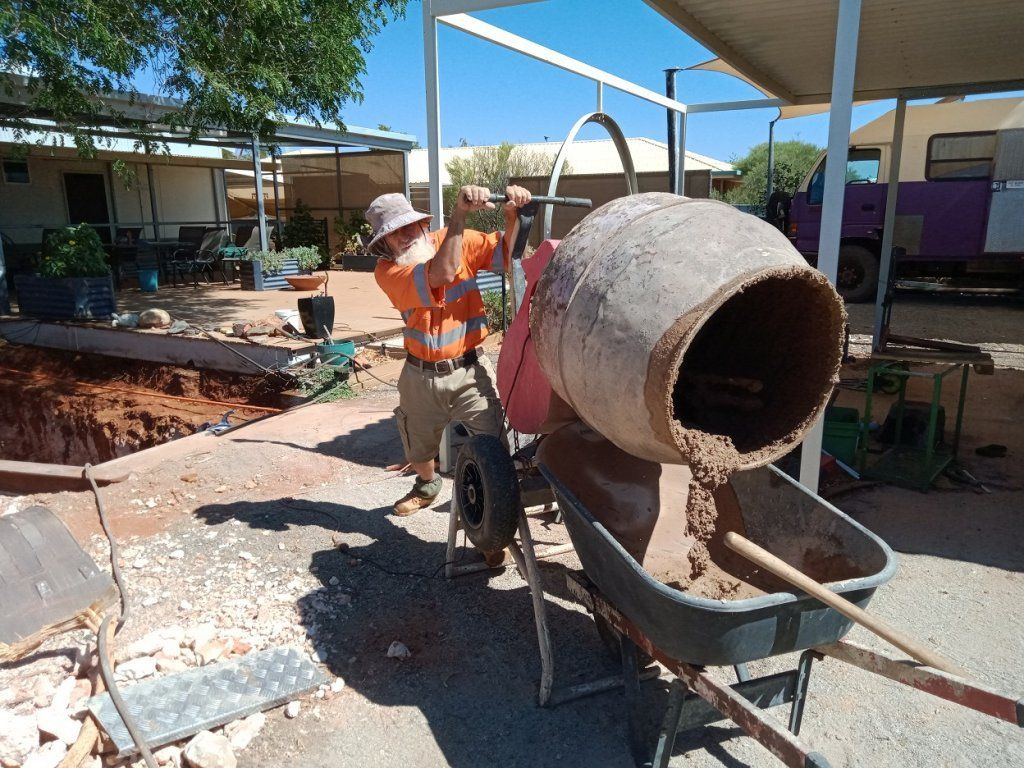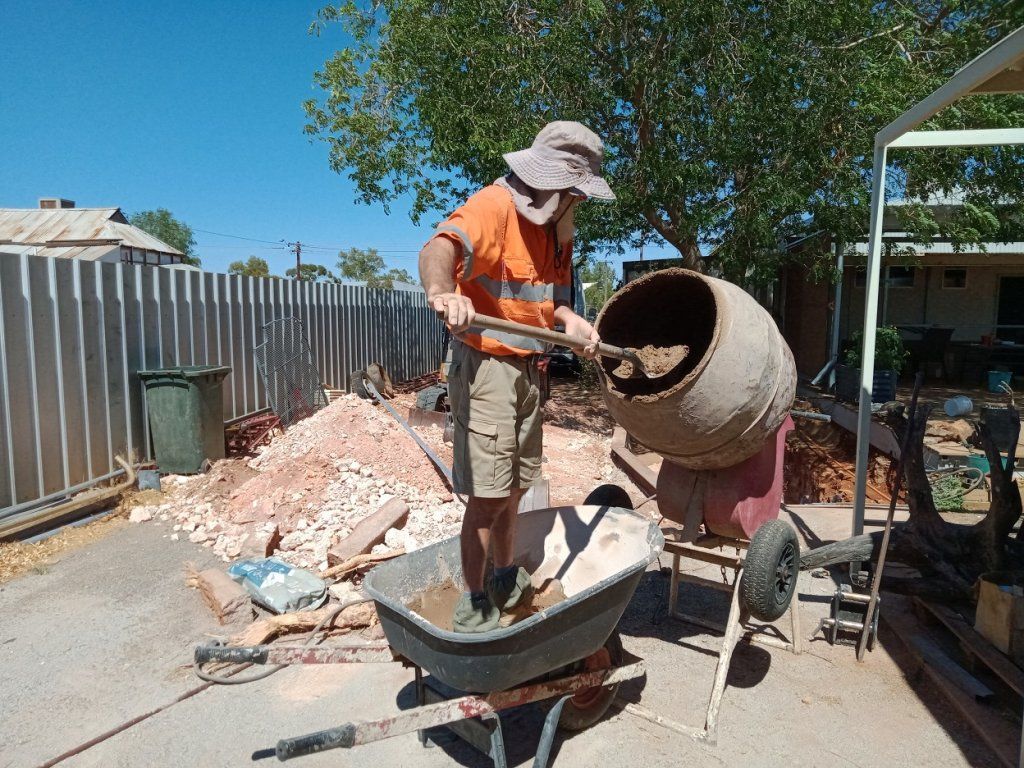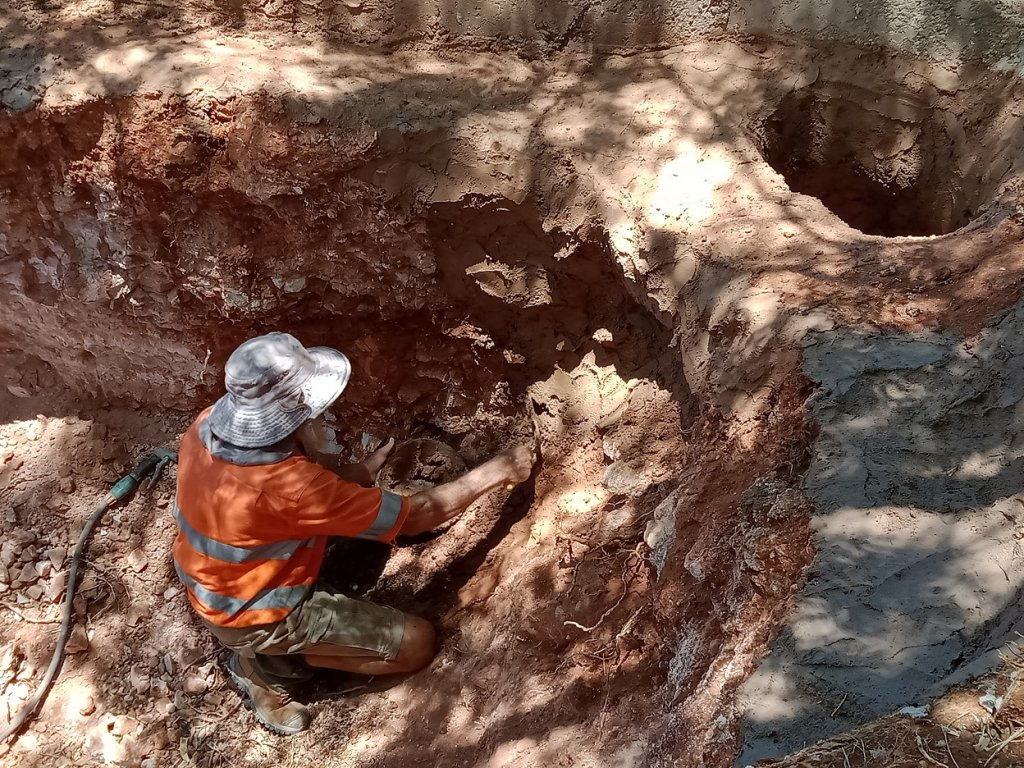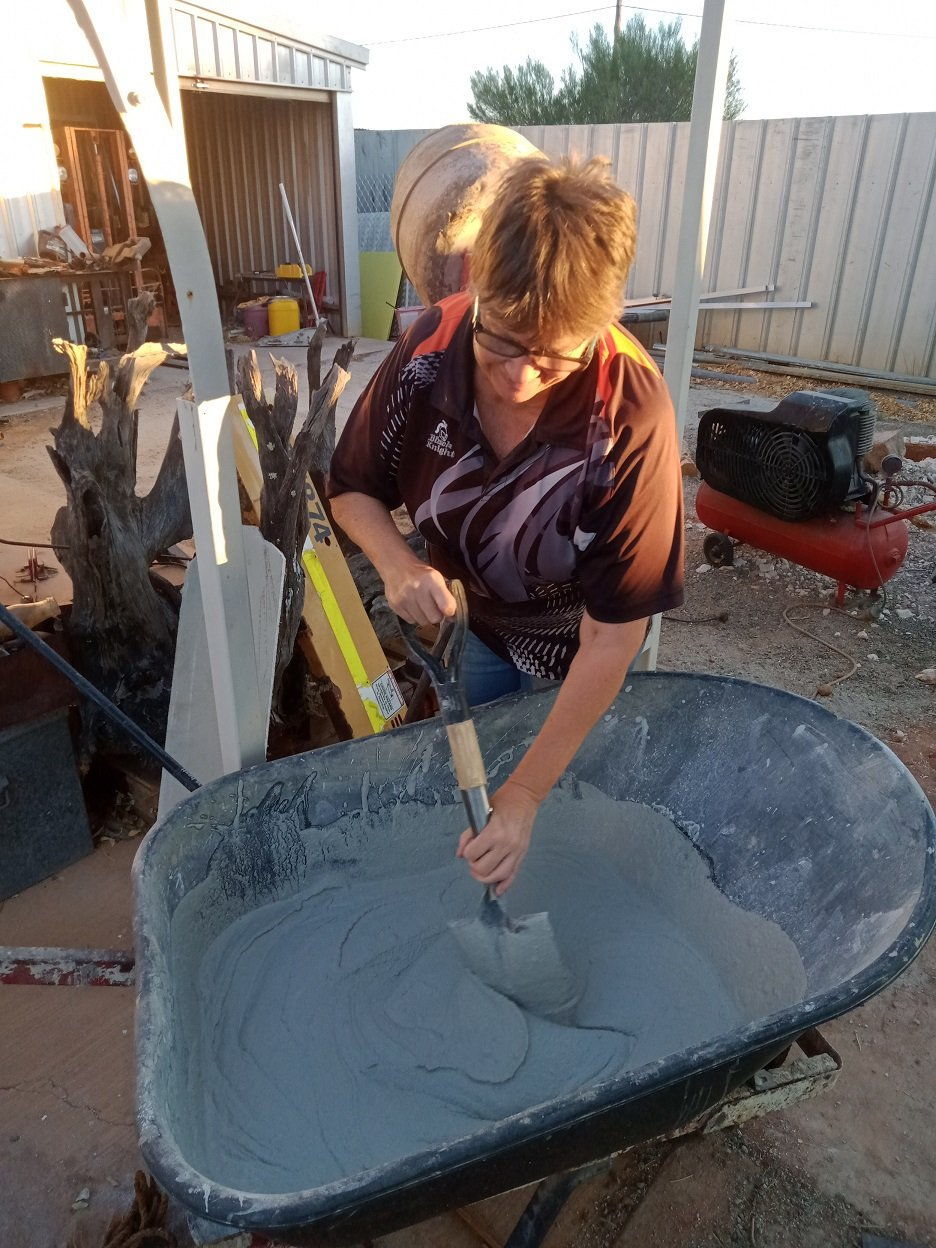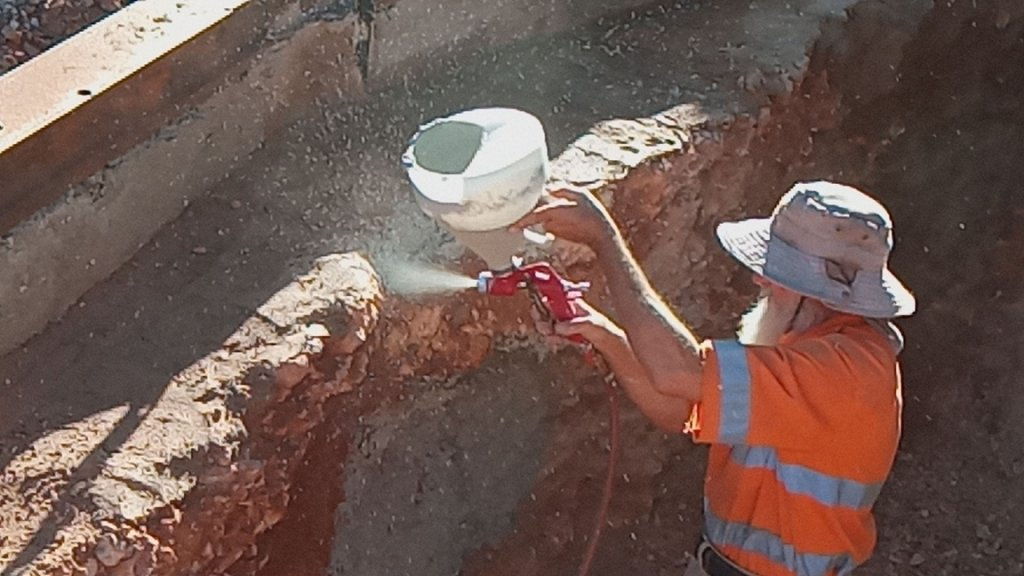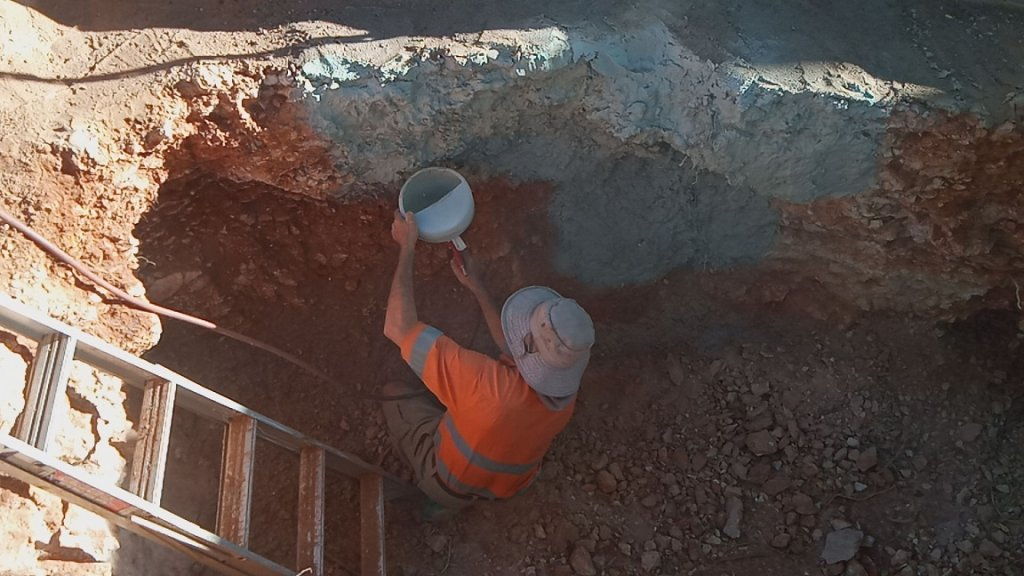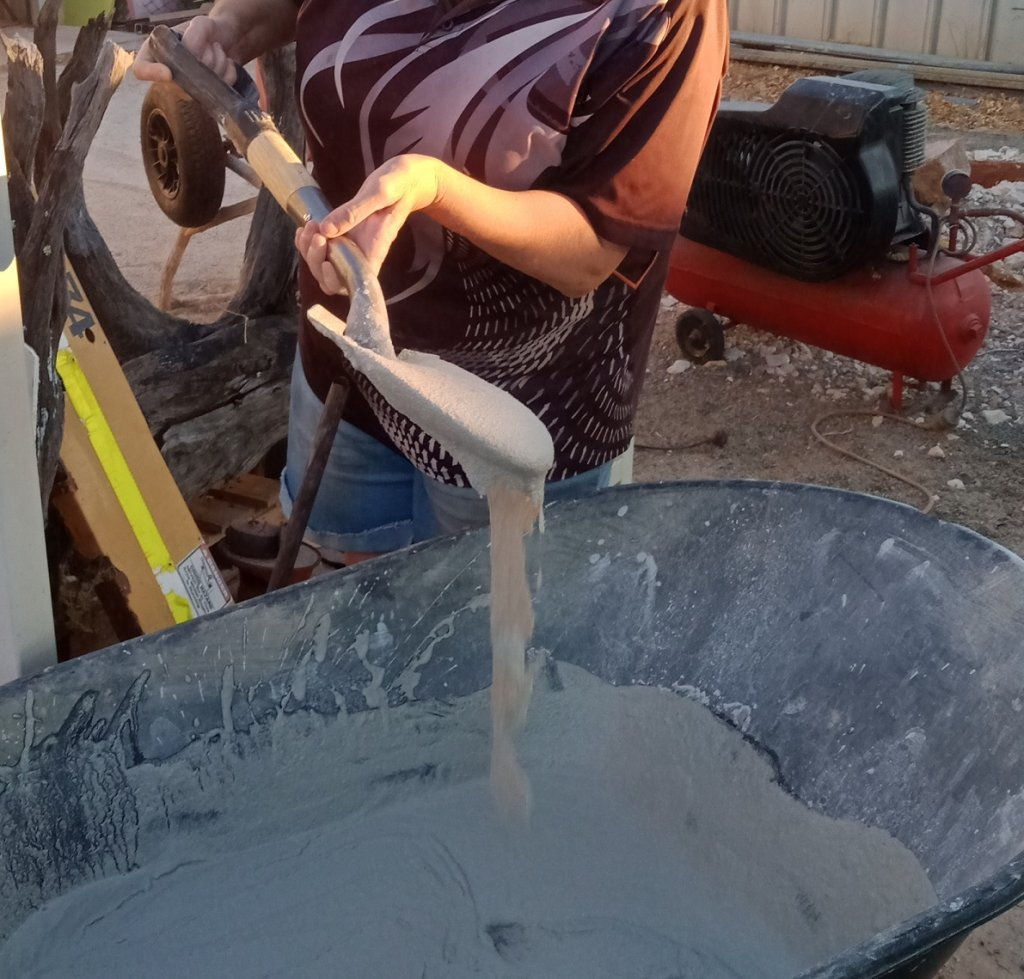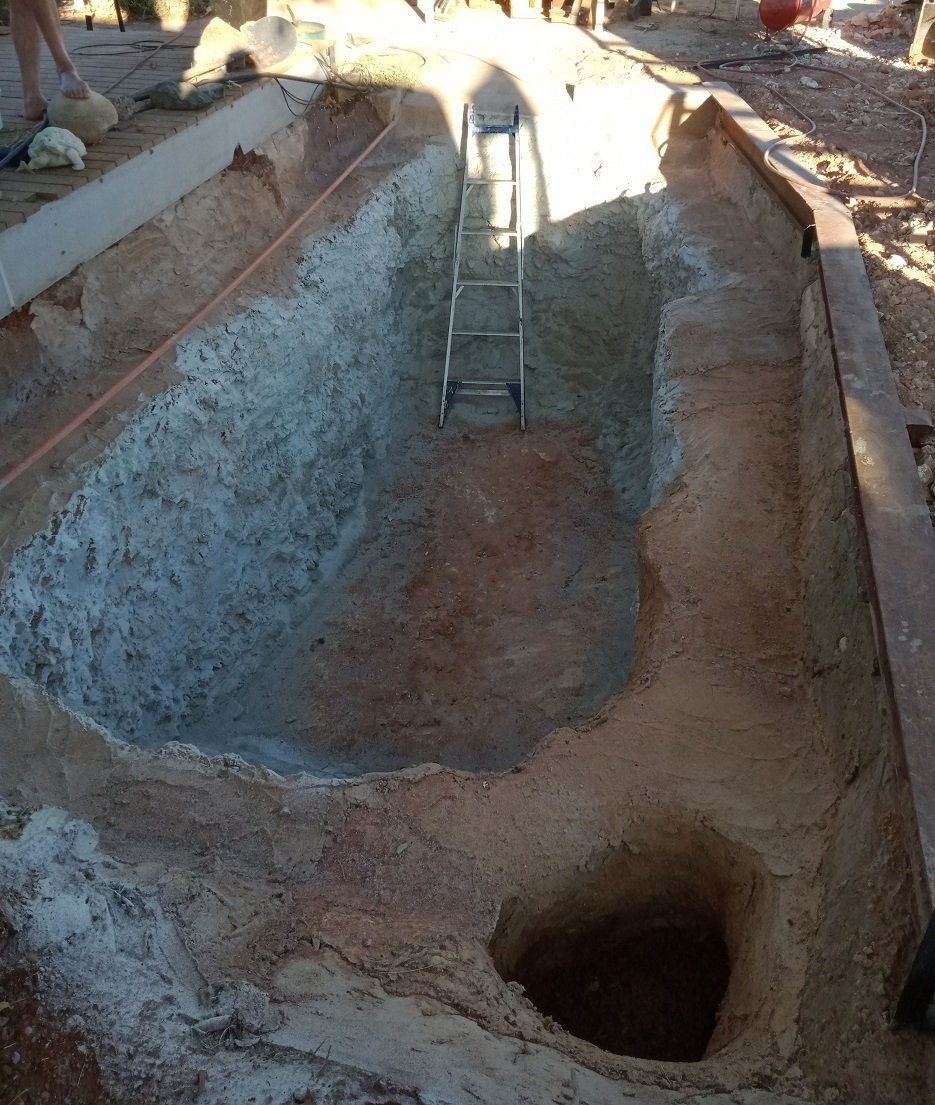One note here, Xypex is not good for pools as it doesnt allow a good bond of concrete to the reo, but there may be newer products that work.
Is that a tree next to the hole ? Have in mind that the tree will find any weakness in your build to get to the water.
Moneybox, with pools, they drive a 500mm pin of reo directly into the vertical soil wall to wire tie the reo onto and hold it in place, and on horizontal planes they use 'plastic chairs or concrete resting blocks' that the reo sits in a groove or on a flat.
The reo panels are quite substantial at 8mm or 10mm x 100x100 mesh, this is in two layers and supported between them with tied in short bars (a little like wall ties in house walls)
the corners are bent reo rod tied to the mesh, thats for vertical and horizontal corners.
Once the mesh is all tied in the vertical sides can be supported by horizontal bars/beams across the hole from one side to the other, wire the top edge of the side mesh to the cross bars.
The support pins can then be disconnected and hammered into the soil wall, or you can do that as you lay up the concrete.
Concrete is a fine washed gravel, from memory 4-5 mm so it can be sprayed ? Remember a 50mm coverage of the reo is important, It isnt a cheap method to use.
I have used pond sealing product on the exterior of the Cellar, some are toxic, get one made for specific for fish ponds, they are great, use a bunch of cheap rollers to apply it.
Ground water and pool buoyancy cause most of the cracking problems, pools will float, but if the soil expands and shrinks seasonally with wet and dry weather, the concrete has to hold all the water pressure.
That is why I suggested a flexible membrane, like the heavy duty tarp or rubber materials. Price may even be cheaper. You can line the dirt side with cheap 5mm mdf to stop stones causing issues,
or sheet corflute.
https://www.youtube.com/watch?v=Clkv9gJJPw4
https://www.youtube.com/watch?v=IOWFtsKEJkg
https://www.youtube.com/watch?v=R2MYUSAwmVo
.
.
A couple of alternative build methods -
Mesh and pour the base, sit first layer of concrete blocks on the wet base to bond, let it dry, then drill holes thru the cavity of the blocks and into the 150mm base, install vertical reo, brick up with blocks and reo inside full height then fill cavities of blocks with concrete.
If you had trenched only you can use the excavation to be formwork for holding the vertical concrete pour and hang mesh into the trench, then excavate the guts out and pour the floor after pinning the mesh in place.
If it is a fish pond, have you thought about aeration of the water volume, a single dead fish can cause enough degradation of the water to consume all the oxygen and kill the others, please look into that.
Research by the Adelaide University has shown that a single dead Carp can deplete almost all of the
oxygen from 800L of water within 48 hours, further research carried out by WaterNSW at Prospect
Reservoir in NSW has shown a severe drop in dissolved oxygen. In most cases dropping to zero oxygen for
up to 5 days. WaterNSW researcher Joe Pera has stated again on the Landline episode that for such a long
period of low oxygen you will pretty much wipe out the rest of the ecosystem and that other species
would not be able to survive a depletion of oxygen for a day.
https://www.aph.gov.au/~/media/Comm...e/34 Letter from Aussie Carp Fishos.pdf?la=en
I you can source a product, I would highly recommend a flexible membrane.
or a precast concrete or fibreglass product for the pond.
Best of luck mate.

Make sure it is fenced to keep kids away, that is deep.
Is that a tree next to the hole ? Have in mind that the tree will find any weakness in your build to get to the water.
Moneybox, with pools, they drive a 500mm pin of reo directly into the vertical soil wall to wire tie the reo onto and hold it in place, and on horizontal planes they use 'plastic chairs or concrete resting blocks' that the reo sits in a groove or on a flat.
The reo panels are quite substantial at 8mm or 10mm x 100x100 mesh, this is in two layers and supported between them with tied in short bars (a little like wall ties in house walls)
the corners are bent reo rod tied to the mesh, thats for vertical and horizontal corners.
Once the mesh is all tied in the vertical sides can be supported by horizontal bars/beams across the hole from one side to the other, wire the top edge of the side mesh to the cross bars.
The support pins can then be disconnected and hammered into the soil wall, or you can do that as you lay up the concrete.
Concrete is a fine washed gravel, from memory 4-5 mm so it can be sprayed ? Remember a 50mm coverage of the reo is important, It isnt a cheap method to use.
I have used pond sealing product on the exterior of the Cellar, some are toxic, get one made for specific for fish ponds, they are great, use a bunch of cheap rollers to apply it.
Ground water and pool buoyancy cause most of the cracking problems, pools will float, but if the soil expands and shrinks seasonally with wet and dry weather, the concrete has to hold all the water pressure.
That is why I suggested a flexible membrane, like the heavy duty tarp or rubber materials. Price may even be cheaper. You can line the dirt side with cheap 5mm mdf to stop stones causing issues,
or sheet corflute.
https://www.youtube.com/watch?v=Clkv9gJJPw4
https://www.youtube.com/watch?v=IOWFtsKEJkg
https://www.youtube.com/watch?v=R2MYUSAwmVo
.
.
A couple of alternative build methods -
Mesh and pour the base, sit first layer of concrete blocks on the wet base to bond, let it dry, then drill holes thru the cavity of the blocks and into the 150mm base, install vertical reo, brick up with blocks and reo inside full height then fill cavities of blocks with concrete.
If you had trenched only you can use the excavation to be formwork for holding the vertical concrete pour and hang mesh into the trench, then excavate the guts out and pour the floor after pinning the mesh in place.
If it is a fish pond, have you thought about aeration of the water volume, a single dead fish can cause enough degradation of the water to consume all the oxygen and kill the others, please look into that.
Research by the Adelaide University has shown that a single dead Carp can deplete almost all of the
oxygen from 800L of water within 48 hours, further research carried out by WaterNSW at Prospect
Reservoir in NSW has shown a severe drop in dissolved oxygen. In most cases dropping to zero oxygen for
up to 5 days. WaterNSW researcher Joe Pera has stated again on the Landline episode that for such a long
period of low oxygen you will pretty much wipe out the rest of the ecosystem and that other species
would not be able to survive a depletion of oxygen for a day.
https://www.aph.gov.au/~/media/Comm...e/34 Letter from Aussie Carp Fishos.pdf?la=en
I you can source a product, I would highly recommend a flexible membrane.
or a precast concrete or fibreglass product for the pond.
Best of luck mate.
Make sure it is fenced to keep kids away, that is deep.




